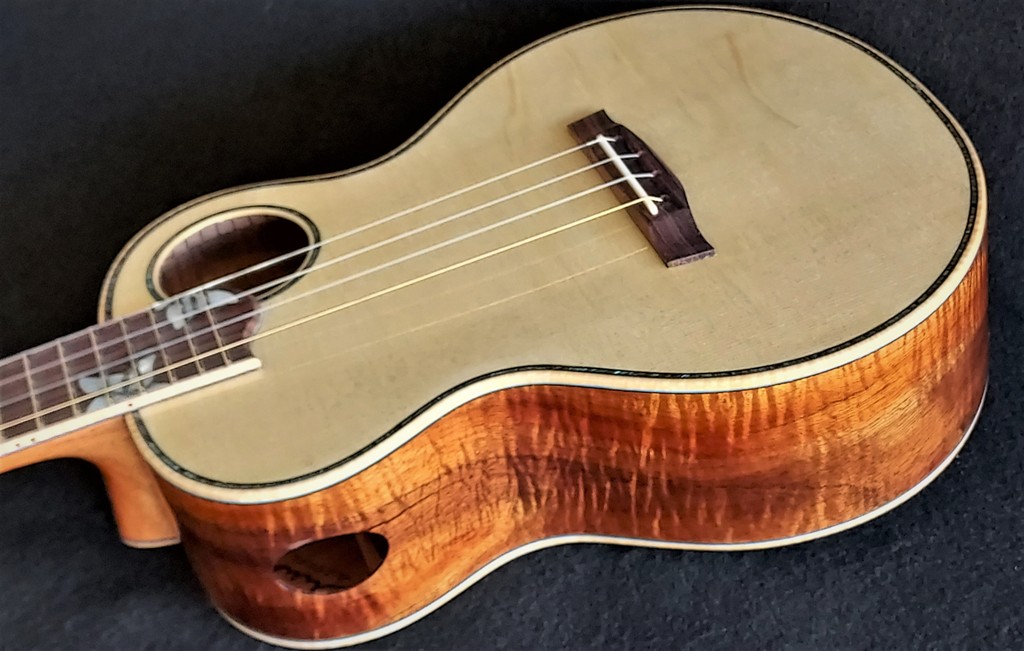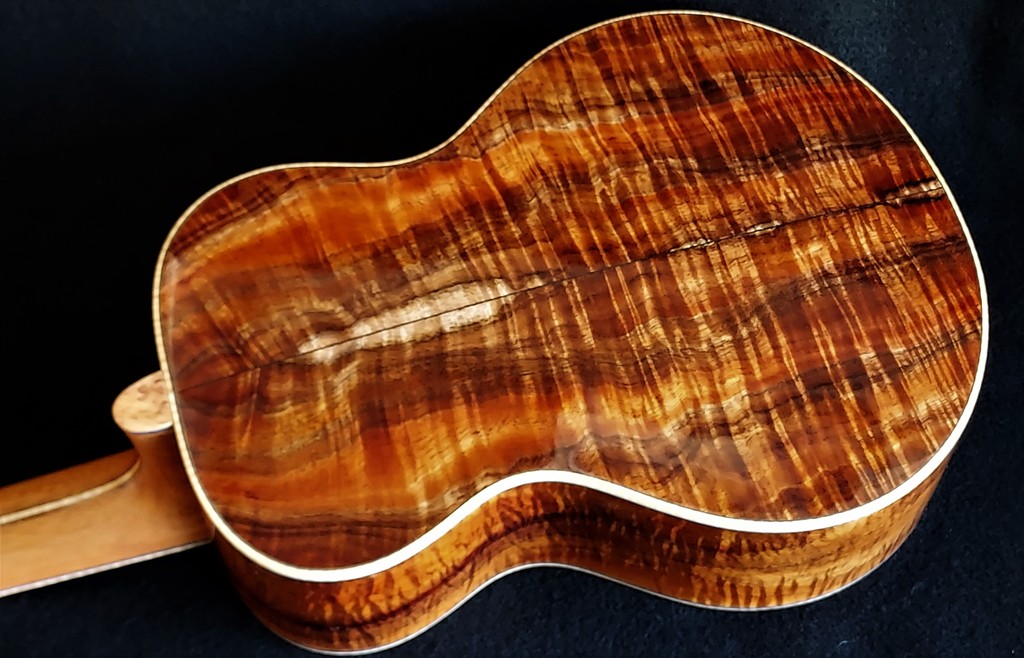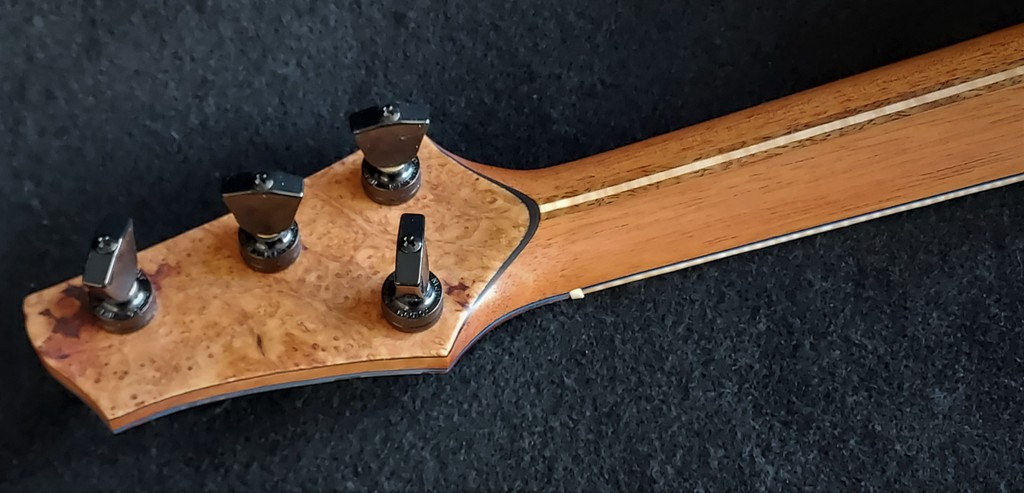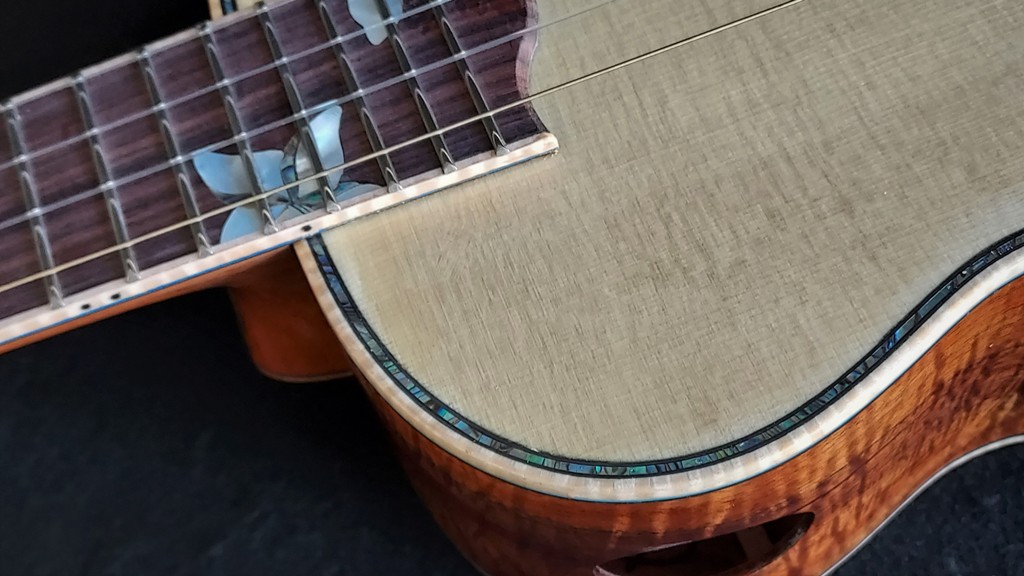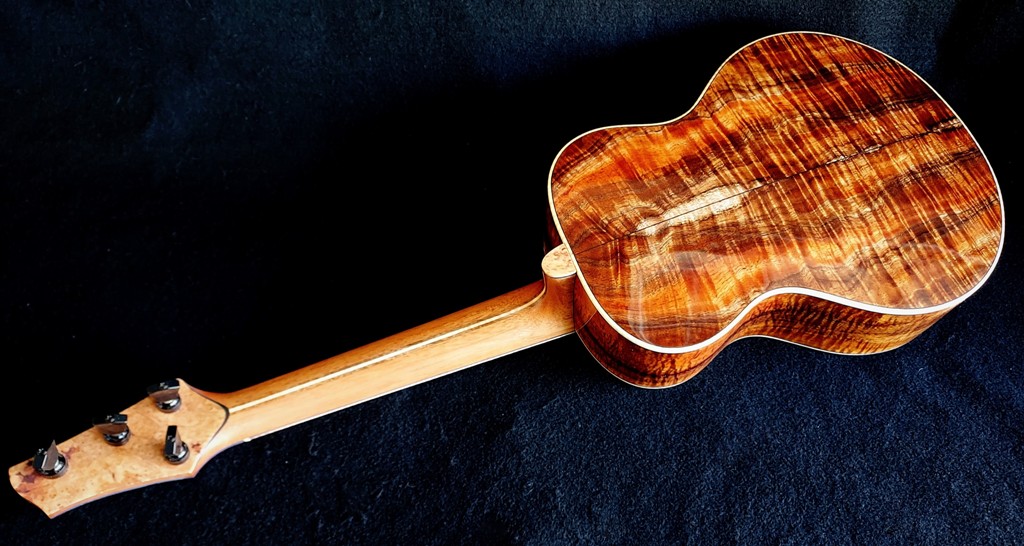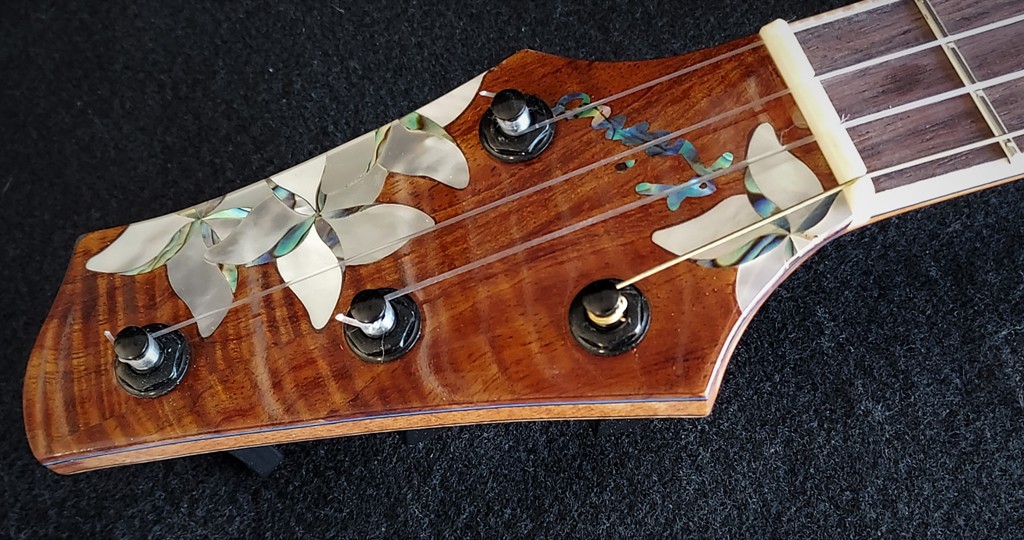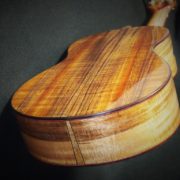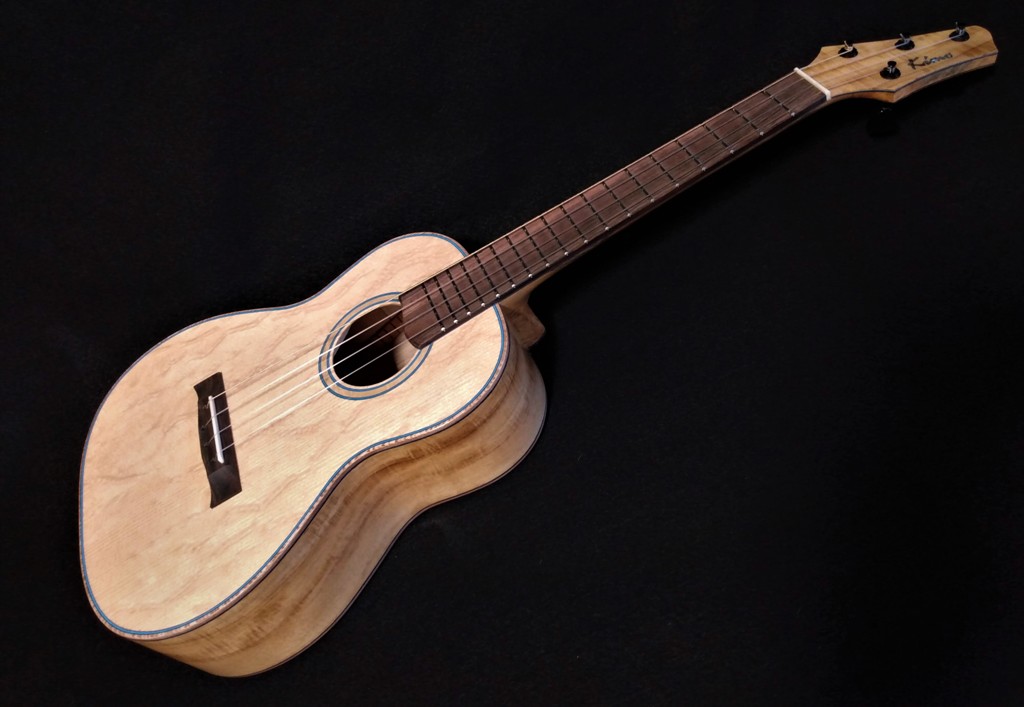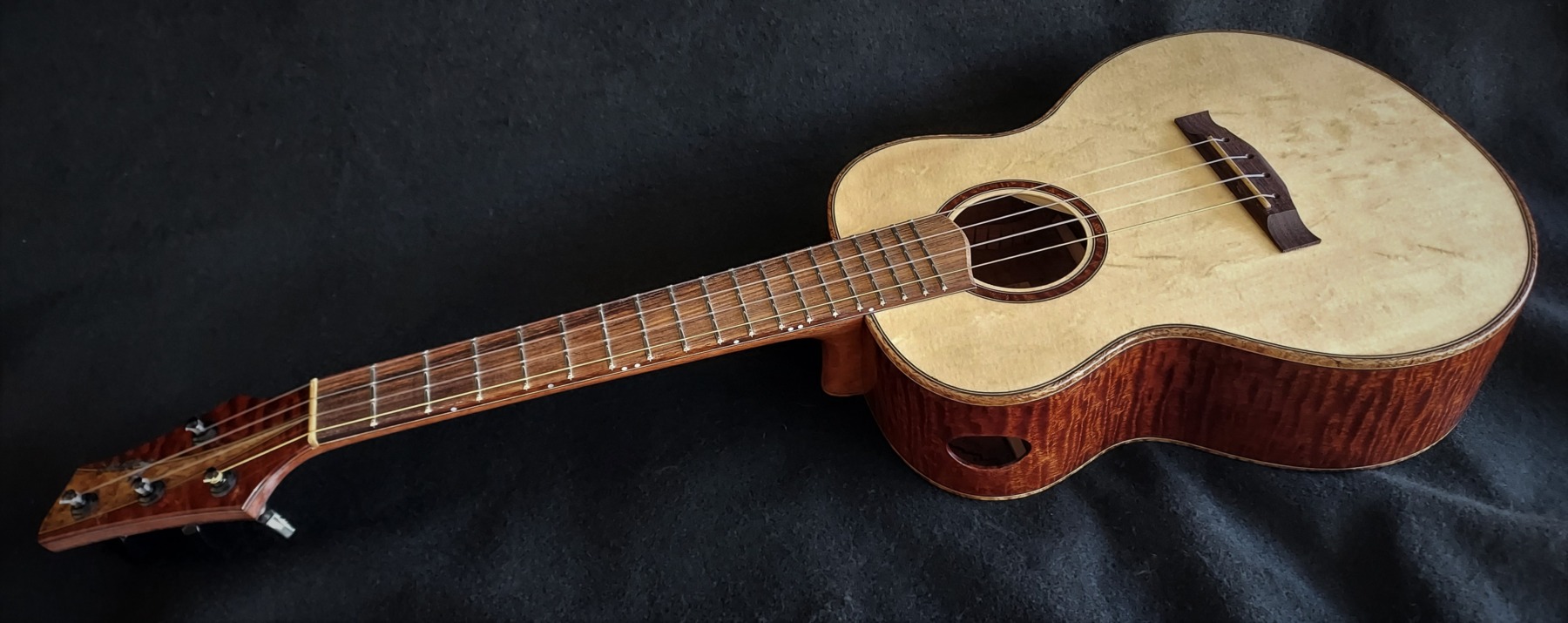Plumeria Tenor Ukulele - Custom Build-Sold
Finally! Really moving slow here. This is the Plumeria Tenor Ukulele in the post yesterday.
It’s all about the wood.
Body: Curly Hawaiian Koa.
Sound board: Swiss Moon Spruce with subtle horizontal bearclaw figure.
Neck: Honduran Mahogany with Hawaiian Mango and curly American Maple lamination. Internal carbon fiber truss rod, of course.
Fret Board and Bridge: Brazilian Rosewood.
Binding: American curly Maple with Abalone purfing and blue/black fiber accents.
Accent Wood: Maple Burl.
The rest of the build.
Tuners: Gotoh UPT.
Inlays: Plumeria flowers with white MOP and blue/green Paua Abalone. Blue paua abalone LOGO.
Strings: Pepe Romero with smooth wound low “G”.
Nut and Saddle: unbleached bone.
Amplification: Mi-Si.
Case: Crossrock ABS.
Headstock design: 3L-1R. It kinda looks like a Fender, but it’s not. It is actually my standard design with the top half angled off. Chuck Moore has used a similar design in the past. I like it and plan to use it on most tenor instruments.
And–Or, the design/sound discussion.
This is a custom order. I was allowed a certain amount of latitude in the build. After some discussion the client opted for an off-center sound hole design with Koa back and sides and a traditional tonewood top.
I first saw this design in Eric Devine’s shop on Maui about a zillion years ago. It is the Kasha design that Hana Lima ‘Ia was offering as an alternative to the customary ukulele look and bracing. I never did like the Kasha bracing so opted for a modified fan brace initially which was later replaced by my standard modified “X”. Not getting into too much of the details, I believe that the sound hole placement and the use of a side port was to maximize the surface area of the sound board. A bit later Nahenahe Ukulele made some instruments using the double sound hole design that was popularized by Steve Grimes for Keola Beamer’s guitars.
Well, I made a bunch prior to 2007 and the instruments got good reviews but the off-center sound hole never caught on. So, going with the flow I returned to a more traditional look but I did move the sound hole north to free up working sound board area.
Now, I believe the design may be seeing a resugence with the market’s desire for different appearances and improved sound possibilities.
There are so many variables between instruments that it is difficult to quantify sound based only on design. This instrument is moderately bright and evenly balanced compared to a very warm-sounding similar instrument with an extremely low density redwood top. With a bit of time I expect it will warm a bit, especially with that Swiss top. Volume and sustain is not a problem.
There you go gang, it’s Plumeria Tenor Ukulele time!


